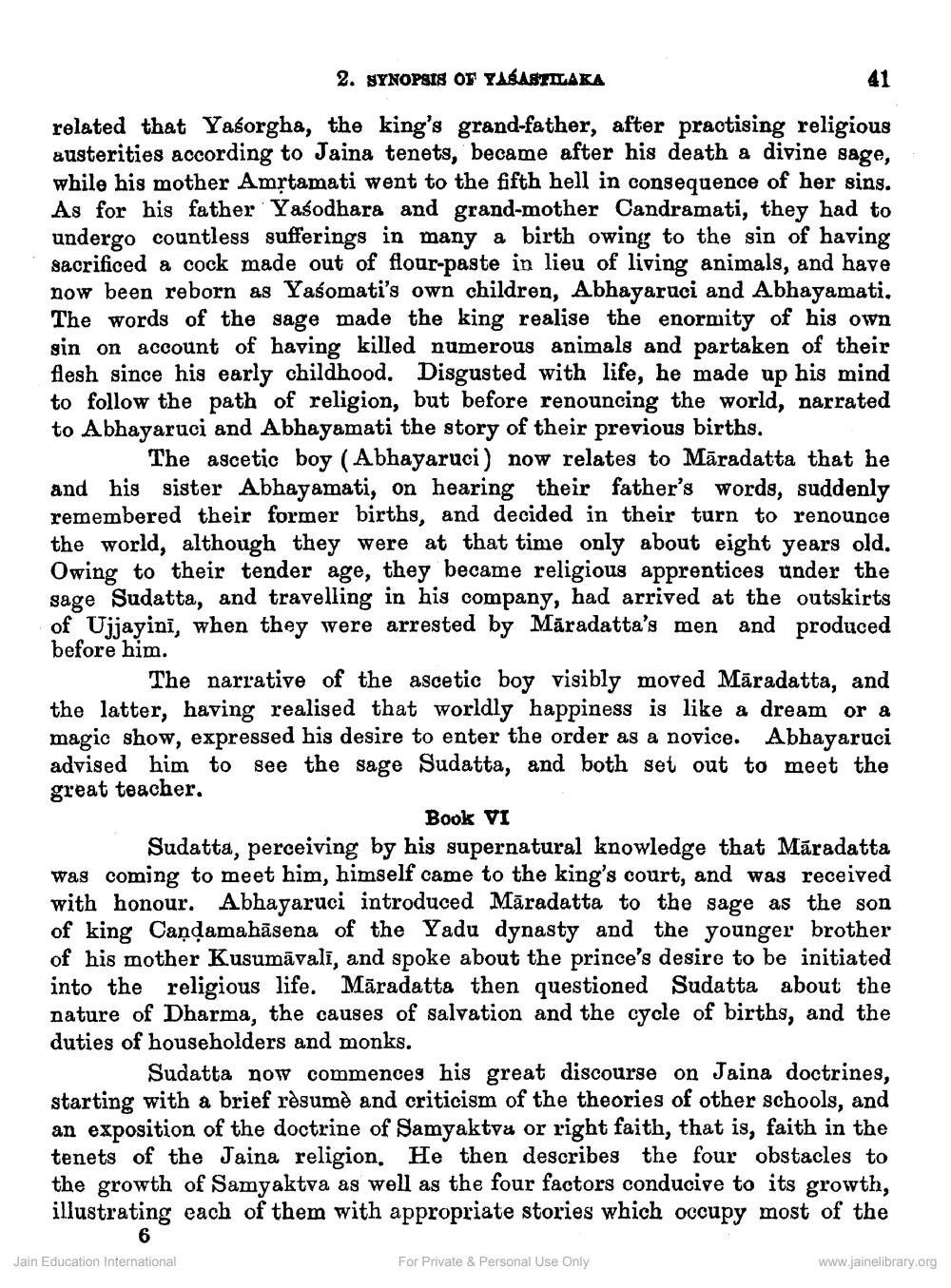________________
2. SYNOPSIS OF YAKASTILAKA related that Yaśorgha, the king's grand-father, after practising religious austerities according to Jaina tenets, became after his death a divine sage, while his mother Amrtamati went to the fifth hell in consequence of her sins. As for his father Yasodhara and grand-mother Candramati, they had to undergo countless sufferings in many a birth owing to the sin of having sacrificed a cock made out of flour-paste in lieu of living animals, and have now been reborn as Yasomati's own children, Abhayaruci and Abhayamati. The words of the sage made the king realise the enormity of his own sin on account of having killed numerous animals and partaken of their flesh since his early childhood. Disgusted with life, he made up his mind to follow the path of religion, but before renouncing the world, narrated to Abhayaruci and Abhayamati the story of their previous births.
The ascetic boy (Abhayaruci) now relates to Māradatta that he and his sister Abhayamati, on hearing their father's words, suddenly remembered their former births, and decided in their turn to renounce the world, although they were at that time only about eight years old. Owing to their tender age, they became religious apprentices under the sage Sudatta, and travelling in his company, had arrived at the outskirts of Ujjayini, when they were arrested by Māradatta's men and produced before him.
The narrative of the ascetic boy visibly moved Māradatta, and the latter, having realised that worldly happiness is like a dream or a magic show, expressed his desire to enter the order as a novice. Abhayaruci advised him to see the sage Sudatta, and both set out to meet the great teacher.
Book VI Sudatta, perceiving by his supernatural knowledge that Māradatta was coming to meet him, himself came to the king's court, and was received with honour. Abhayaruci introduced Māradatta to the sage as the son of king Caņdamahāsena of the Yadu dynasty and the younger brother of his mother Kusumāvali, and spoke about the prince's desire to be initiated into the religious life. Māradatta then questioned Sudatta about the nature of Dharma, the causes of salvation and the cycle of births, and the duties of householders and monks.
Sudatta now commences his great discourse on Jaina doctrines. starting with a brief resume and criticism of the theories of other schools, and an exposition of the doctrine of Samyaktvå or right faith, that is, faith in the tenets of the Jaina religion. He then describes the four obstacles to the growth of Samyaktva as well as the four factors conducive to its growth, illustrating each of them with appropriate stories which occupy most of the
Jain Education International
For Private & Personal Use Only
www.jainelibrary.org




